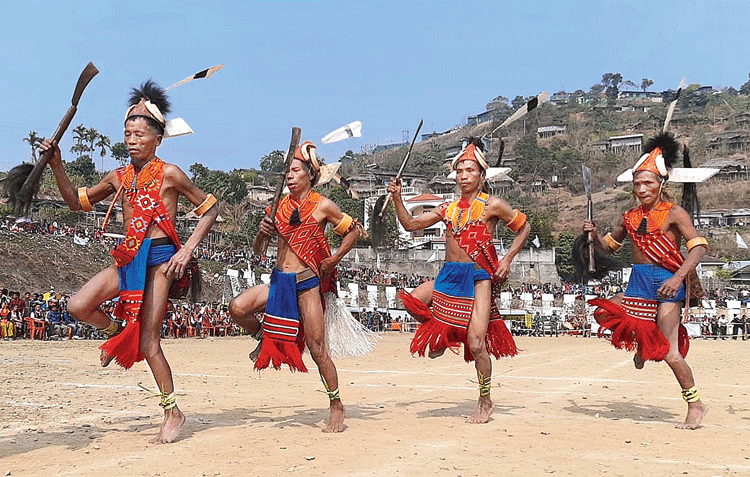The religious life
Today, 90% of the Nagas are Christian, most of them Baptists. But although the missionaries were deliberately trying to replace key institutions and beliefs which they thought to be incompatible with Christianity, many elements of the traditional religion and worldview are found also among the Christian Nagas. They have merged with the new belief to create something new. Therefore, there is no clear-cut division between them and the so-called ìanimistsî. And the important traditional festivals, especially those connected to the agricultural cycle, are celebrated by both Christian and ìanimistî Nagas. Even though the spiritual meaning may be different, as a social event they are of the same importance to both. In some villages, Christians also observe genna, everywhere they consult traditional healers, and the belief in spirits is very common among all Nagas.
Until not very long ago, Naga villages were not only economically largely selfsufficient, they also were self-governing, independent political entities. That is why they are often called ìvillage statesî or ìvillage republicsî. Much of this autonomy has been retained until today. Each village still has its own well-defined village territory. Within this they have their own land tenure system, land use administration, court of justice and, nowadays, a church.
Traditionally, all Naga tribes were Animists. In Animism the basic tenets of belief and faith were (i) one supreme, omnipotent God, who was well disposed towards man. Although this God was generally understood in the singular male gender, sometimes, the feminine terminology, or even neutral plural form, were also used, in some tribe languages, when referring to God. (ii) An unspecified number of evil spirits who were ill disposed towards man and they were responsible for all kinds of sickness, ill fortune, etc. And they had to be propitiated whenever there was misfortune, such as a sickness, strikes you. (iii) Belief in life after death. There was even the equivalent of St Peter who stood guard over the gates to the next life but who, unlike St Peter, was a less pleasant fellow. It is said that those who led good lives on earth were, in the next life, transformed into stars and moons to shine forever in the skies.
But, to day, with the coming of Christianity the vast majority of Nagas have been converted to the Christian faith. All kinds of Christian denominations are found, but the Baptist and Catholic denominations are the main ones.
Nagaland Population by Religion
Religion wise in Nagaland, Christian is the major religion with 88% of the population, followed by Hindu with 8.7%. Muslim, Sikh, Buddhist and Jain are less than 3% in total.


